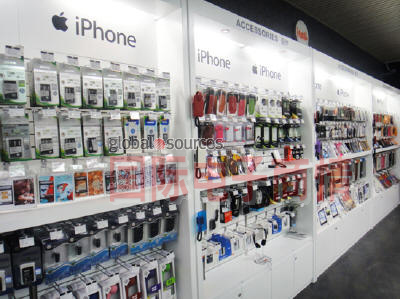關(guān)鍵字:智能手機 手機配件
“智能手機的滲透率日益增加,直接推動了配件設(shè)計向智能手機轉(zhuǎn)變,這將推高消費者互動水平、產(chǎn)品附加值以及品牌認(rèn)知度。” ABI Research的高級分析師Michael Morgan表示,“對于智能手機市場的新進入者而言,若想瓜分先入者的市場份額,就必須提高自己的品牌知名度。而在這個大眾市場里,開發(fā)新奇有趣的配件對于提升自己的品牌定位是非常有效的。”

對于功能手機市場而言,平均每臺手機的配件消費為28.17美元;而在智能手機市場,平均每臺手機的配件消費為56.18美元。造成這種差異的原因是,智能手機配件的平均價格比功能手機貴,且智能手機消費者比功能手機消費者購置的配件更多。
相比于功能手機配件往往是基礎(chǔ)型的必需品,智能手機配件越來越多地借助于設(shè)備的應(yīng)用程序和通信協(xié)議以提升設(shè)計復(fù)雜性,并日趨成為服務(wù)交付平臺。
ABI Research的移動設(shè)備董事Jeff Orr補充:“隨著智能手機價值的擴大,配件市場也需要相應(yīng)提升產(chǎn)業(yè)水平,如產(chǎn)品合約化、定制化等,并需提前預(yù)測消費習(xí)慣的變化并作出相應(yīng)調(diào)整。”
ABI Research“手機配件市場報告”,重點分析關(guān)鍵的手機配件市場,包括機內(nèi)及下游配件。同時,報告還研究手機配件市場的市場驅(qū)動力和增長障礙,收購渠道,技術(shù)趨勢,未來的市場潛力等。
Smartphone Accessory Revenues Valued at $20 Billion in 2012
Smartphones will drive $20 billion in aftermarket accessory revenues in 2012, accounting for more than half of the $36 billion that all aftermarket handset accessories will produce. By 2017, smartphone accessories will grow to $38 billion in revenues, while feature phone accessory revenues decline to $12 billion.
“The increasing penetration of smartphones is driving a shift in accessory design toward smart accessories that drive higher levels of consumer interaction, product value, and brand recognition,” says Michael Morgan, senior analyst, devices, applications & content. “For new market entrants, developing brand recognition is paramount in capturing market share from the incumbents. This is best accomplished by the development of engaging, innovative accessories that extend the value proposition of today’s mass market accessories.”
Feature phone consumers will spend an average of $28.17 on accessories per device, while smartphone owners will spend $56.18 on accessories per device. The difference in spending is driven by a combination of consumers spending more per accessory and purchasing more accessories for smartphones as compared to feature phone owners.
While feature phone accessories tend to be basic commodity-type products, smartphone-focused accessories are increasingly looking to leverage on device applications and communication protocols that can increase the design complexity and allow the accessories to become service delivery platforms.
“As smartphones continue to expand the value of mobile handsets, accessories will need to equally deliver higher levels of product engagement, customization, and predict consumers’ shifting mobility use cases,” adds Jeff Orr, practice director, devices, applications & content.
ABI Research’s report, “Mobile Handset Accessories,” focuses on key handset accessories and the market for these products, including in-depth analysis for both in-box as well as aftermarket handset accessories. It also examines key market drivers and barriers to growth, acquisition channels, technological trends, and future market potential for handset accessories.
 移動設(shè)備訪問
移動設(shè)備訪問